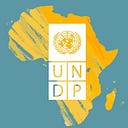The silence of the wind
In Mozambique, air pollution caused by open coal mines threatens health and livelihoods
With 40,000 inhabitants, Moatize is the second largest city in Western Mozambique and is also one of the most polluted since, in 2011, an open pit coal mine started operating directly next to its residential spaces. The operations of the mine, including blasting and heavy traffic, is releasing dust particles into the air, which fall over nearby communities.
Dust is now constantly present, polluting the air, the water and even the food of local residents. This causes severe health problems and social conflicts over land and water resources are on the rise in the area.
But the communities surrounding the mines lack concrete evidence to prove that pollution from the mine is violating their human rights and damaging the environment. They also lack technical tools and skills to evaluate the direct impact of the pollution on their health.
With UNDP’s and the Swedish Environmental Protection Agency’s (SEPA) support, Source International, a non-governmental organization, trained Moatize’s communities and the National Agency for Environmental Quality Control, AQUA, in monitoring the environmental pollution and health problems caused by the mines and fighting for their rights.
“Trainees learn to estimate the direction of the wind to know where the dust is coming from, to spot-check black particle deposition… they learn to monitor water and air quality and also to take samples to send to the lab.” — Miguel Madrid, Source International.
Training communities on the technical aspects of water, air, and noise monitoring around mining sites helps them get scientific evidence to seek accountability and redress administratively and juridically. It also strengthens their participation in decision-making and planning around natural resources, with an aim to prevent socio-environmental conflicts.
Local residents an authorities are also trained to conduct human rights impact assessments, to seek recourse through the human rights legal system, if needed.
A serious health risk
Coal dust, especially fine coal dust, has been identified as causing a range of diseases and health problems such as asthma and lung cancer.
The fine dust from the mine extraction area ends up in the houses of the villagers, covering food or kitchen utensils and ending up being ingested. It also settles on fresh water and reservoirs during blasting and transportation by road or train.
“We know that an important part of the particles released by the coal mines activities are coarse particles…there is also a component of smaller particles which have a greater impact on people’s health.” — Miguel Madrid, Source International.
Strengthening capacities
The joint Swedish Environmental Protection Agency -UNDP Environmental Governance Programme (EGP) aims to integrate environment and human rights into the governance of the mining sector. It focuses on empowering communities to address the root causes of environmental degradation, human rights violations and social conflict. The EGP is funded by the Swedish International Development Cooperation Agency (Sida).
The project also helps strengthen the capacities of national authorities to plan and conduct participatory environmental monitoring and human rights impact assessments, ultimately transforming mining resources into human and social capital.
“The EGP helped me understand the negative environmental and social impacts of mining exploitation in my country and other programme countries. I’m giving my opinion differently now when reviewing environmental study reports. ” — Technician from AQUA
Text: UNDP EGP, Source International, Stefano Sbrulli. Photos: Stefano Sbrulli.
Note: This article was originally published as a photo gallery in EL PAÍS
